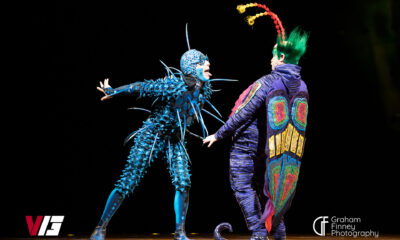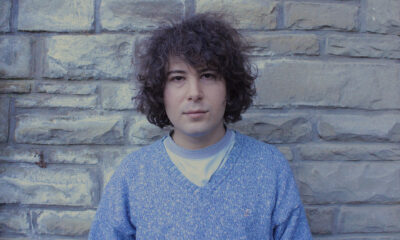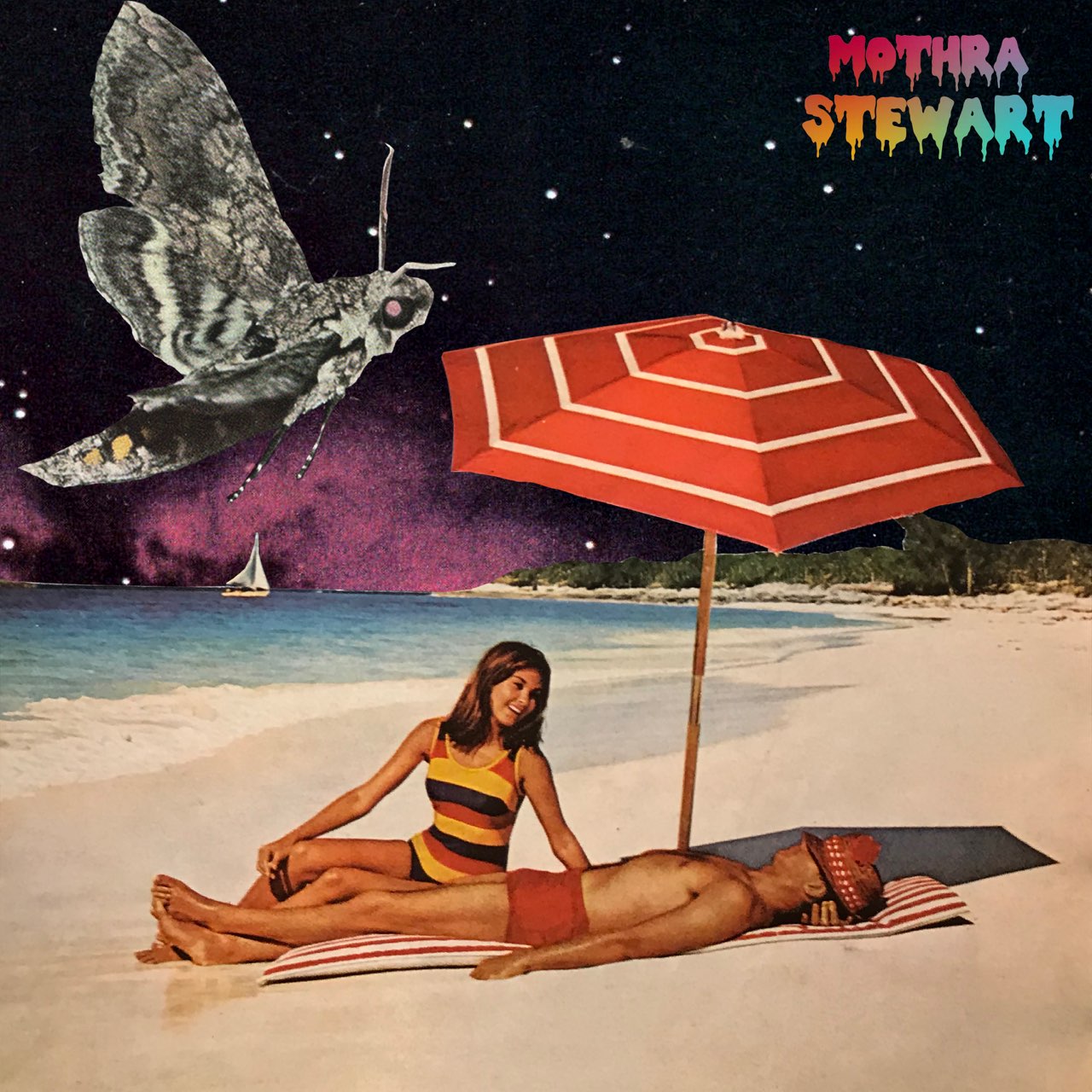Features
Mothra Stewart Taps Some ‘60s Spirit on New Album ‘The Times They AI a-Changin’ [Premiere]

If you’re here for some hi-fi, then you may want to turn your attention elsewhere because we’re about to go lo-fi, and we mean real lo-fi. The Times They AI a-Changin’, so we may as well go with it and here to lead us is lo-fi enthusiast Mothra Stewart, armed with his brand new EP. Stewart is a musician who specializes in lo-fi, indie, noise pop which becomes abundantly clear after listening to only about one minute of The Times They AI a-Changin. There’s no dressed up, over-produced, overthought sound on this collection; the songs have a raw, unconventional quality to them, landing somewhere between lo-fi shoegaze and bedroom pop.
In setting out to write and record the Green Witch Recordings-released The Times They AI a-Changin, Stewart immersed himself in his environment and the rich musical history that surrounded him. As he explains, “When I was writing this record in my tiny loft in Greenwich Village, I wanted to tap into the spirit of this historic neighborhood in New York City. So much rock n’ roll history has happened here. Nearly 60 years ago artists like Simon and Garfunkel, members of The Mamas and The Papas, and of course Bob Dylan roamed these same streets as complete unknowns. I wanted to take that same creative energy and put a futuristic, noisy, bedroom pop twist on it. That’s why the record’s title is a portmanteau of the famous Dylan song and the abbreviation for Artificial Intelligence.”
Mothra Stewart may sound like a real name, but it’s actually the stage name of the New York City-based musician and songwriter Marc LeFebvre. Originally from Austin, Texas, Lefebvre adopted the Mothra Stewart name to serve as his creative outlet as a recording artist after he left the Austin-based rock group Chill Russell in 2017, a band which he co-founded. Lefebvre’s experience with radio, touring, and recording proved to be highly valuable in him feeling comfortable in creating his own solo project. It couldn’t be proceeding any better with Stewart’s cutting edge originality in bringing classic and modern influences together to create his own sound, one that you won’t hear in any other artist.
We recently spoke to Stewart to talk some more about The Times They AI a-Changin and that vintage cover art that accompanies the EP.
There is some pretty crazy sonic experimentation on this new EP The Times They AI a-Changin. It sounds like a record you may have mostly composed in a studio but you mentioned that it was written in your loft. How did you accomplish coming up with this sound while writing at home?
Mothra Stewart: “Some of my favourite artists are shoegaze artists, and in that vein, I’ve built quite an array of guitar pedals. Using reverb and delay pedals, tape machines, weird synthesizers, drum machines, and various other noise making devices, I was able to lay down a foundation of sound, and I built the songs on top of that.
For instance, I have a really strange synthesizer housed inside the head of a baby doll. It’s called a ‘Baby Bot’ and it’s made by these really outsider geniuses at Moon Armada. It’s fucking bizarre and unpredictable, and I love it! I also have some really interesting boutique pedals made by companies like Earthquaker Devices and Electro Harmonix, stylophones, and synthesizers by Moog and Critter and Guitari.
But what’s been the most interesting part of experimenting with noise is the mood it creates. You can build lush soundscapes, cold, spacey cacophonies, or eerie cinematic drones. At the end of the day, there are still the traditional elements of a song on every track of this record. So to answer your question, I built a lot of noisy cassette loops in my loft, played more traditional instruments and melodies on top of them, and then added lyrics and stories to pull it all together.”
How do you go about creating that lo-fi sound that you hear on the EP? Is that the result of just a lot of toying around in the studio?
“It’s a lot of trial and error. Sometimes I’ll come up with a really cool loop or soundscape, but it doesn’t lend itself to a song. And other times, I’ll create one sound that leads to a guitar riff, and the whole song is written in under an hour. It’s sort of like catching lightning in a bottle. There’s no real tried and true method for this type of experimentation and stream of consciousness writing. It’s sort of like going out on the ocean, putting your sail up and seeing where the wind blows you.
I will say it’s a lot of fun though, and I think more traditional songwriters who get writer’s block should try it! As for the lo-fi sound, I use a lot of tape machines, but there are also all sorts of plugins to create that sound now too. I’m a big fan of companies like Soundtoys and Waves, and some of the plugins those companies produce.”
What inspired the vintage 1960s look of the album artwork with the couple laying on the beach?
“I wanted something that matches the surreal and outsider feel of the record. I’ve been a huge fan of the Greenwich Village and Laurel Canyon sounds of the 1960s. And in keeping with the theme of the album, which is sort of this modern take on bygone eras of rock n’ roll, I thought a collage of some 1960’s sunbathers in a bizarre, futuristic world of giant moths and outer space seemed like a good fit. And I’ve used moths and the female figure on artwork in the past, which lends itself to the portmanteau Mothra Stewart.”
You mentioned that you wanted to tap into the spirit of the legendary musicians of Greenwich Village of the 1960s with this EP. Did you listen to a lot of these artists when writing and recording? Were there other ways in which you tried to immerse yourself more within that culture?
“The Village is like this separate world inside of New York City. It’s brownstones, coffee shops, small restaurants, boutique shops, and historical music venues. I’ve frequented Café Wha? and The Bitter End to try to put myself in the same headspace as the greats who played those venues in the 1960s. I’ve also read a lot about that era and listen to all of those records on vinyl. I’ve got reel to reel tape machines in my loft, acoustic guitars, and harmonicas and I just try to put myself there when I’m writing, and soak up the culture generally.
A lot of it is just osmosis. I’m not one of those people who dresses and lives completely like they are in the 1960s, although I know and love people like that! On this record, I wanted to take from what was so incredible about the renaissance and revolution that was occurring during that era, and apply a modern lens to it.”
How do you feel this EP compares with your previous work? What would you say is the number one difference between it and your other releases?
“On this record, I made a conscious effort to incorporate noise. I thought it would add to the lo-fi, bedroom pop aesthetic. I also think this record is moodier and less aggressive than my past records, whether that’s the debut Mothra Stewart 7 inch or my work with Chill Russell and other previous bands. Maybe I’m just mellowing out in my old age.”
-

 Alternative/Rock10 hours ago
Alternative/Rock10 hours agoThe V13 Fix #010 w/ High on Fire, NOFX, My Dying Bride and more
-

 Hardcore/Punk7 days ago
Hardcore/Punk7 days agoHastings Beat Punks Kid Kapichi Vent Their Frustrations at Leeds Beckett University [Photos]
-

 Alternative/Rock6 days ago
Alternative/Rock6 days agoA Rejuvenated Dream State are ‘Still Dreaming’ as They Bounce Into Manchester YES [Photos]
-

 Culture1 week ago
Culture1 week agoCirque Du Soleil OVO Takes Leeds Fans on a Unique, Unforgettable Journey [Photos]
-

 Music1 day ago
Music1 day agoReclusive Producer Stumbleine Premieres Beat-Driven New Single “Cinderhaze”
-

 Indie1 week ago
Indie1 week agoMichele Ducci Premieres Bouncy New Single “You Lay the Path by Walking on it”
-

 Culture2 days ago
Culture2 days agoDan Carter & George Miller Chat Foodinati Live, Heavy Metal Charities and Pre-Gig Meals
-

 Alternative/Rock1 week ago
Alternative/Rock1 week agoWilliam Edward Thompson Premieres His Stripped-Down “Sleep Test” Music Video

















